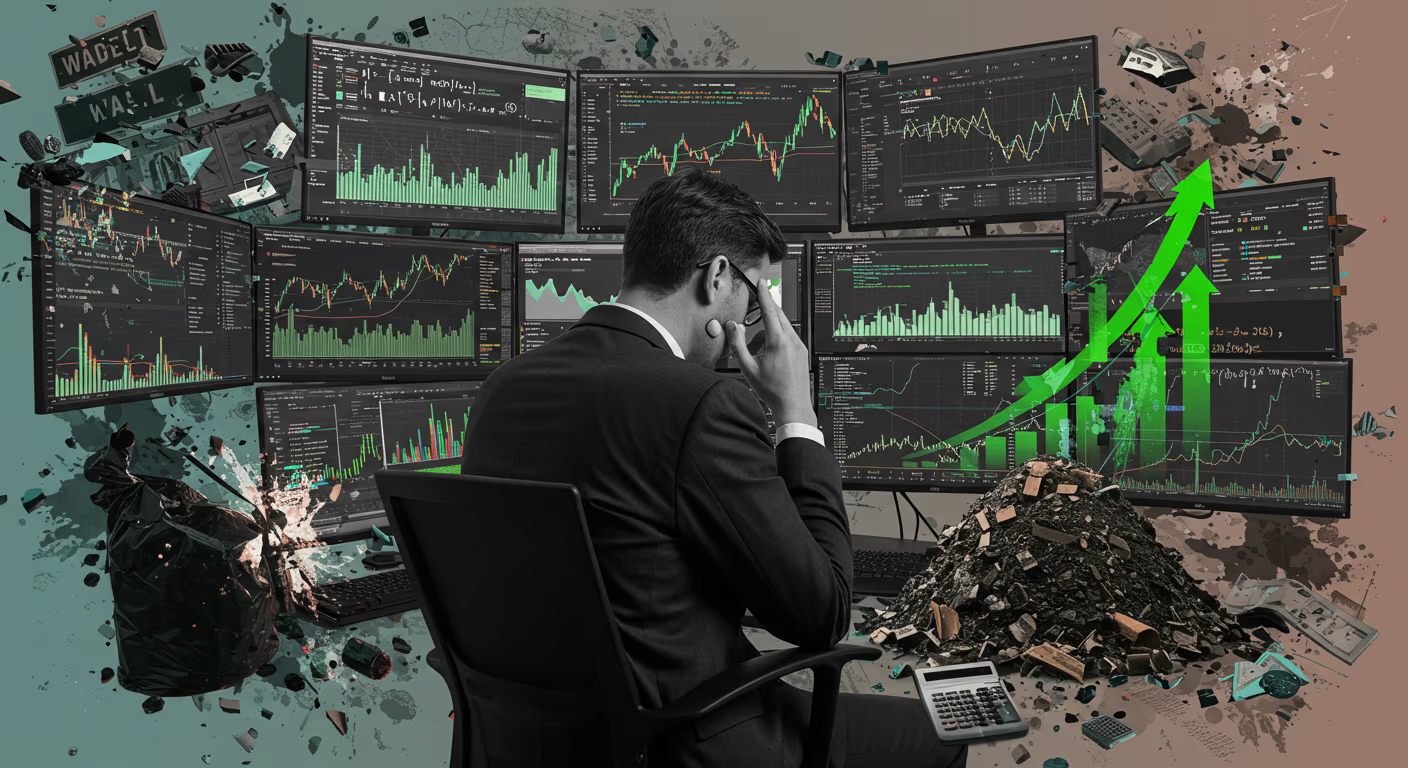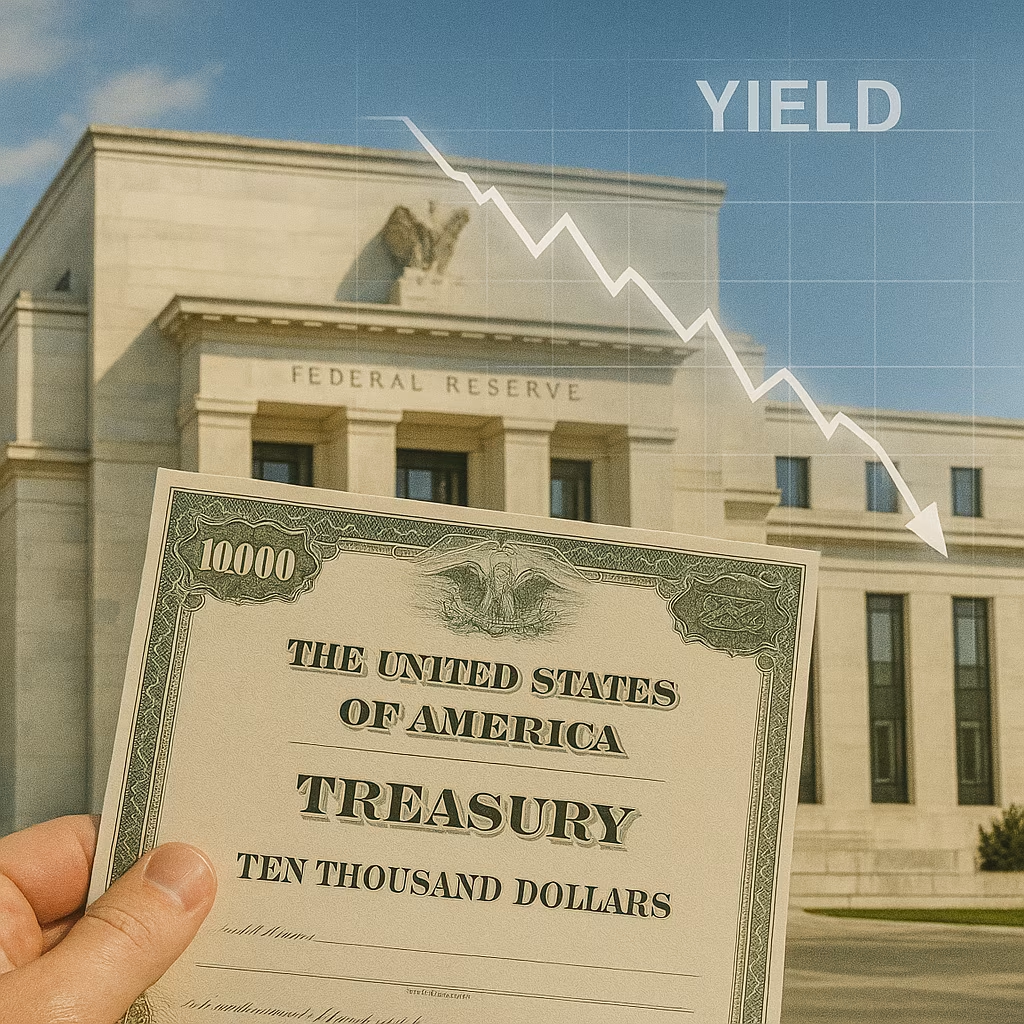Quantitative hedge funds — long known as the ultra-rational brainpower behind Wall Street’s most advanced trades — are facing one of their toughest stretches in years. Since early June, many of the industry’s top players have posted surprising losses, and a peculiar force might be behind it: a speculative run-up in low-quality stocks, what some insiders are calling a “garbage rally.”
Quant Funds Enter the Danger Zone
Names like Two Sigma, Qube Research, and Point72’s Cubist are reportedly among those struggling as systematic trading models run into market conditions they weren’t designed to handle. According to Goldman Sachs, the average quant fund lost 0.8% in just one day during a particularly volatile mid-July session, marking July as potentially the worst month for quant strategies in five years.
These aren’t just small misfires. What started as a string of unremarkable daily dips has snowballed into a deeper industry-wide concern — one with roots in market behavior that’s become increasingly difficult to model.
Not a Financial Crisis — But Still a Mess
Unlike past downturns driven by recession fears or systemic failures (like in 2008 or 2020), today’s quant losses appear to stem from the opposite — a surprisingly strong U.S. economy that has reignited risk appetite among retail investors and algorithmic trend followers alike.
“It’s not like 2007,” said Jacob Kline, founder of Dark Forest Technologies, in a recent letter to investors. “This is what we politely call a ‘garbage rally.’”
In this context, “garbage” refers to low-quality, heavily shorted stocks that have seen sudden price surges, seemingly without fundamental reason. As these stocks rally, quant funds — many of which are short those exact positions — are being forced to unwind trades at a loss, compounding the pain.
The Meme Stock Effect, Revisited
While celebrity-fueled hype and meme stock mania reminiscent of 2021 are again part of the market narrative, insiders say this latest shift isn’t solely the work of Reddit or retail traders.
“They were late to the game,” said one executive at a multimanager quant fund. Instead, many small-cap and thinly traded Chinese stocks began moving erratically weeks before they showed up on meme-stock radars.
Rather than a wave of coordinated social media trading, this rally appears to be a byproduct of broader liquidity. Thanks to solid economic indicators — including low inflation and no recent rate hikes from the Federal Reserve — the market has become increasingly risk-on. As institutional investors reduced short bets and backed off high-quality names, low-tier equities found room to run.
Why Quants Got Caught Off Guard
Quantitative investing relies heavily on models that identify relationships between factors like value, momentum, volatility, and quality. When those relationships break down — as they have in this current environment — even the most sophisticated systems can flounder.
“Quants sort good from bad,” said Kline. “But when bad stocks rally for no clear reason, they’re often on the wrong side.”
Many firms hedged their long positions in quality stocks by shorting lower-tier names — a profitable strategy until it wasn’t. As stock indexes reached new highs in June, funds stopped increasing long bets, but also stopped shorting the junk, inadvertently creating a vacuum that allowed questionable stocks to explode in value.
This surge in “junk” stocks then attracted meme stock traders, who piled in and pushed prices higher, triggering a feedback loop of losses for quant-driven strategies.
AI and Short-Term Trend Models May Be Fueling the Fire
Antoine Haddad, founder of Bainbridge Partners, believes short-term strategies — including AI-driven algorithms — might be exacerbating the rally. As more capital chases short-term gains, models designed to follow momentum may unintentionally amplify price spikes in low-quality stocks, adding fuel to an already chaotic market.
Equity Capital Markets Are Back — and That’s Not Helping Quants
Another overlooked factor? The resurgence of equity capital markets activity.
After a quiet start to 2025, IPOs, follow-on offerings, and convertible bond issuances surged in June. According to Morgan Stanley, capital raising “lit up like a Christmas tree” at the end of Q2. While this may be a healthy sign for public companies, it poses challenges for quants who don’t typically focus on such primary market flows.
“Quants don’t sit in that business and they don’t see that flow,” the exec added.
Will the Pain Spread or Subside?
One major question looms: Is this a localized event, or the start of something bigger?
While smaller firms may be forced to unwind positions, leading to further market volatility, the largest quant funds have deeper capital reserves and longer lock-up periods, giving them the capacity to ride out turbulence.
Dark Forest Technologies, for example, believes this scenario mirrors the end of 2023, when similar losses hit quant funds — only for many to rebound in spectacular fashion when market dynamics reverted.
“We think strong hands should be levering up into this headwind,” the firm wrote in its investor note.
What Comes Next?
Some insiders believe the worst may be over. Now that the financial media is paying attention, the so-called “garbage rally” might lose steam. However, markets rarely return to normal overnight.
This event has highlighted how even the smartest algorithms can be undone by unpredictable human behavior, rapid shifts in liquidity, and market-wide structural changes.
While traditional investors may dismiss this as another quirky chapter in meme-stock history, for the quants — the engineers of modern markets — it’s a clear signal that market evolution never stops, and models must constantly adapt or risk obsolescence.





